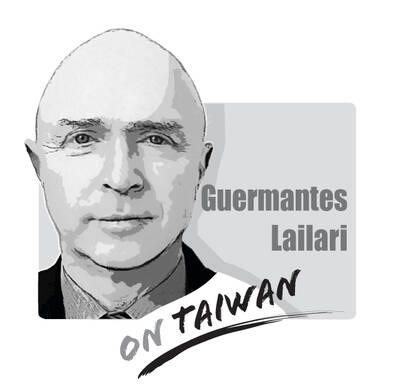On June 22, the Taiwan Public Opinion Foundation released the results of its latest poll on political party approval ratings, which showed that support for the Democratic Progressive Party (DPP) was 28.2 percent, Chinese Nationalist Party (KMT) support was 16.2 percent, and the Taiwan People’s Party (TPP) and New Power Party (NPP) had 10.7 and 10.6 percent support, respectively.
Surprisingly, the KMT received no support from people aged 20 to 24, while support from that group for the DPP, TPP and NPP was 31.4, 19.7 and 18.3 percent, respectively.
On the same day, the National Policy Foundation, a KMT think tank, released the results of its latest poll on political party approval ratings, showing that 32.9 percent of respondents said they support the DPP, 13.7 percent support the KMT, and 6.6 and 5.9 percent support the TPP and NPP, respectively.
A cross-analysis of the polls shows that 37 percent of people aged 20 to 29 support the DPP, while support for the KMT among the same group is a mere 6.3 percent.
The results of the polls bring to mind a comment by Taipei City Councilor Chen Ping-fu (陳炳甫), who also serves as a KMT Central Standing Committee member. In an interview with the China Review News Agency, Chen said that young people do not support the KMT because of amendments to the curriculum guidelines made during Chen Shui-bian’s (陳水扁) presidency, which resulted in senior-high school students receiving a more Taiwan-focused education.
Those students are now in their mid-30s, and they have no positive feelings toward the KMT. Chen Ping-fu even speculated that the party’s support among those around the age of 20 could be less than 3 percent.
“Taiwan awareness” has grown gradually since 1996, when the nation drew a clear line between itself and the authoritarian Chinese Communist Party regime, and held its first direct presidential election. The focus on Taiwan awareness in schools, beginning during Chen Shui-bian’s presidency, has improved students’ independent thinking and self-awareness.
The 2013 protests against the Cross-Strait Service Trade Agreement with China, the Sunflower movement in 2014 and opposition to the old curriculum guidelines are concrete examples of students’ concerns about their future.
Since Johnny Chiang (江啟臣) in March took over the KMT chairmanship, he has worked hard to boost the KMT’s morale without much success. Apart from ascribing a functional and transitional role to the so-called “1992 consensus,” he has failed to propose a powerful and convincing discourse, and the party finds itself in a difficult situation, not knowing what to do next.
As Chen Ping-fu bluntly pointed out, the “1992 consensus” has fulfilled its transitional mission, and the latest election results have proven that most Taiwanese do not recognize the term, so it is time for the KMT to review its cross-strait policy.
A new discourse to replace the “1992 consensus” should not be based on Chiang’s personal opinion alone. The KMT should draw on wisdom from within and outside the party to come up with a core value that can be recognized by the public at large. It should then write it into its party platform to highlight the visionary significance of such a value.
At a time when the KMT’s pro-China stance might raise public doubt, it would make things worse if it failed to clarify its position to dispel those doubts.
Chang Huey-por is a former president of National Changhua University of Education.
Translated by Eddy Chang

Chinese state-owned companies COSCO Shipping Corporation and China Merchants have a 30 percent stake in Kaohsiung Port’s Kao Ming Container Terminal (Terminal No. 6) and COSCO leases Berths 65 and 66. It is extremely dangerous to allow Chinese companies or state-owned companies to operate critical infrastructure. Deterrence theorists are familiar with the concepts of deterrence “by punishment” and “by denial.” Deterrence by punishment threatens an aggressor with prohibitive costs (like retaliation or sanctions) that outweigh the benefits of their action, while deterrence by denial aims to make an attack so difficult that it becomes pointless. Elbridge Colby, currently serving as the Under
The Ministry of the Interior on Thursday last week said it ordered Internet service providers to block access to Chinese social media platform Xiaohongshu (小紅書, also known as RedNote in English) for a year, citing security risks and more than 1,700 alleged fraud cases on the platform since last year. The order took effect immediately, abruptly affecting more than 3 million users in Taiwan, and sparked discussions among politicians, online influencers and the public. The platform is often described as China’s version of Instagram or Pinterest, combining visual social media with e-commerce, and its users are predominantly young urban women,
Most Hong Kongers ignored the elections for its Legislative Council (LegCo) in 2021 and did so once again on Sunday. Unlike in 2021, moderate democrats who pledged their allegiance to Beijing were absent from the ballots this year. The electoral system overhaul is apparent revenge by Beijing for the democracy movement. On Sunday, the Hong Kong “patriots-only” election of the LegCo had a record-low turnout in the five geographical constituencies, with only 1.3 million people casting their ballots on the only seats that most Hong Kongers are eligible to vote for. Blank and invalid votes were up 50 percent from the previous
Japanese Prime Minister Sanae Takaichi lit a fuse the moment she declared that trouble for Taiwan means trouble for Japan. Beijing roared, Tokyo braced and like a plot twist nobody expected that early in the story, US President Donald Trump suddenly picked up the phone to talk to her. For a man who normally prefers to keep Asia guessing, the move itself was striking. What followed was even more intriguing. No one outside the room knows the exact phrasing, the tone or the diplomatic eyebrow raises exchanged, but the broad takeaway circulating among people familiar with the call was this: Trump did